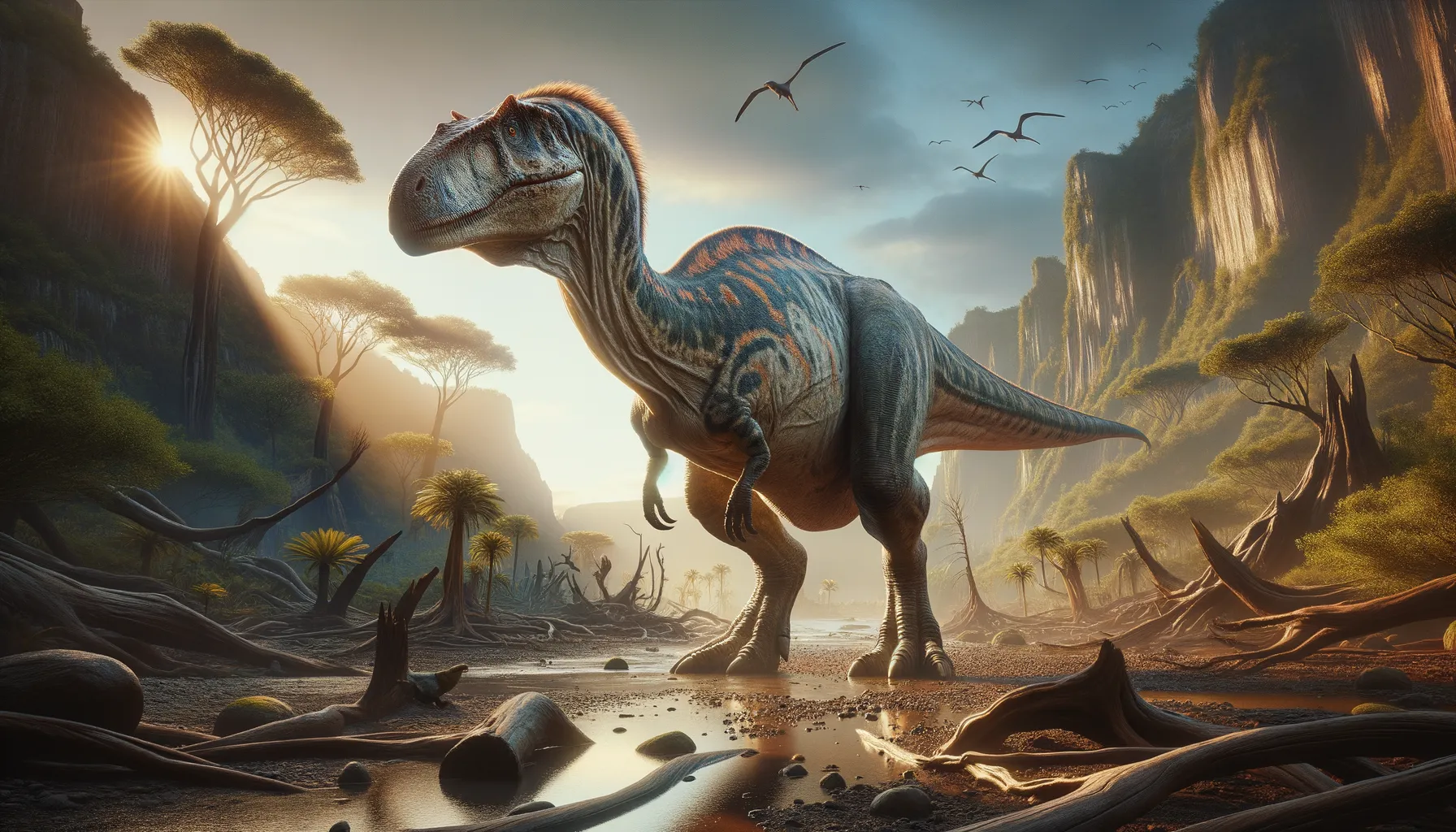
Shantungosaurus
The giant of the duck-billed herd.
Period
Cretaceous
Length
Measured up to 16.6 meters long.
Height
Approximately 5.5 meters tall at the head.
Weight
Around 15 tons, making it one of the heaviest hadrosaurs.
Shantungosaurus is one of the largest known hadrosaurid dinosaurs, often seen as a massive herbivore that roamed ancient Asia. First discovered in China, this dinosaur had a duck-billed appearance and lived during the Late Cretaceous period. Its size provided protection from predators, allowing it to be a peaceful, plant-eating giant of its time.
Diet
Shantungosaurus was an herbivore with a diet consisting mostly of plants. Using its wide, duck-billed mouth, it would have been able to eat large quantities of vegetation efficiently. It likely foraged in both low-lying shrubbery and higher foliage, thanks to its significant height.
Hunting
As a herbivore, Shantungosaurus did not engage in hunting. It relied on its massive size as a primary defense mechanism against carnivorous dinosaurs. Its social behavior in herds may have also provided additional protection and served as a deterrent to predators.
Environmental challenges
Shantungosaurus faced various challenges in its environment, including changing climates and vegetation patterns during the Cretaceous. Potential competition for food resources with other herbivores might have driven behavioral adaptations. Predation by large theropods posed a constant threat, requiring vigilance and perhaps influencing social structures.
Speed
It was relatively slow-moving, using size for protection.
Lifespan
Estimated to be around 20 to 30 years.
First discovery
Discovered in Shandong Province, China, in 1964.
Fun Facts
- Shantungosaurus was one of the largest known duck-billed dinosaurs, reaching lengths of up to 50 feet.
- This dinosaur lived during the Late Cretaceous period, around 70 million years ago, in what is now China.
- Its name means 'Shandong Lizard,' named after the Shandong Province where its fossils were first discovered.
- Shantungosaurus had a flat, wide bill similar to that of a modern duck, perfect for eating plants.
- Despite its great size, Shantungosaurus was a herbivore and likely traveled in herds for protection.
- Some scientists believe it could produce loud sounds, using a special crest on its head to communicate.
- The first fossils of Shantungosaurus were discovered in 1964, making it a relatively recent discovery in paleontology.
Growth and Development
Shantungosaurus likely had a rapid growth rate, essential for reaching its substantial adult size. Juvenile dinosaurs probably experienced vulnerable periods, making early development critical for survival. The bones uncovered show growth rings similar to tree rings, providing clues to their life stages and aging process.
Habitat
Shantungosaurus inhabited lush, forested areas with abundant plant life, supporting their herbivorous lifestyle. These dinosaurs adapted to wetlands, riversides, and floodplains, from which they sourced their food. Its coexistence with diverse species indicates a highly biodiverse ecosystem.
Interaction with other species
Shantungosaurus was part of an ecosystem with various herbivores and predators. It likely lived in herds, which provided protection and social interaction. These herds could have included other hadrosaurid species, leading to complex dynamic relationships and competition for food.
Natural lifespan
Shantungosaurus had an estimated lifespan of 20 to 30 years.
Reproduction
Like other dinosaurs, Shantungosaurus laid eggs, likely in nests in safe, secluded areas. The parental care strategy is not entirely known, but egg protection would have been crucial. Hatchlings were at significant risk, relying on the herd for safety.
Social behaviour
Shantungosaurus exhibited social behavior, often moving in herds. These herds provided safety against predators and helped in foraging. There may have been complex social hierarchies within these groups, influenced by individual size and strength.
Fossil locations
The primary fossils of Shantungosaurus have been found in Shandong Province, China. These fossils include skulls and various skeletal parts, critical to understanding the dinosaur's structure. Additional fossils in nearby regions suggest a wider range along similar habitats in ancient Asia.
